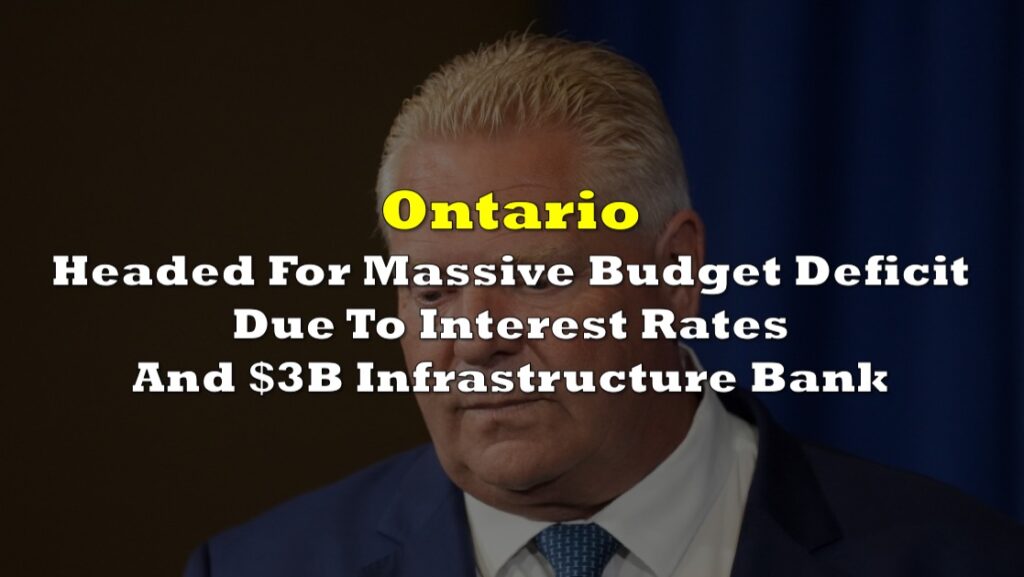Ontario’s latest budget includes a significant boost to the critical minerals innovation fund, with an additional $15 million allocated to drive advancements in technology across the mining sector.
The critical minerals innovation fund is aimed at fostering technological progress from mining and processing to manufacturing, particularly in support of the transition to cleaner energy sources. According to Ontario’s Mines Ministry announcement on Wednesday, the new funding, spread over three years, marks an expansion from its current rate of $5 million per year.
Despite facing economic challenges, including higher interest rates that have led to a forecasted deficit nearly doubling to $9.8 billion, industry stakeholders have expressed support for the increased funding. They anticipate benefits from expedited permit processes enabled by the Building More Mines Act, enacted last May.
Ontario’s strategic goal is to supply battery metals to major automotive manufacturers such as GM, Ford, Honda, Stellantis, and Toyota, which are key players in the province’s leading export sector.
This comes as the federal government in parallel is calling for proposals for the $1.5-billion Critical Minerals Infrastructure Fund.
Additionally, Ontario’s Mines Ministry is actively supporting exploration through a $35 million junior exploration grant program, aimed at fostering new discoveries in the region.
The upcoming regulations under the Building More Mines Act, effective April 1, are set to streamline environmental deliberations and permit processes, significantly reducing timelines from years to months. Mines Minister George Pirie highlighted the province’s commitment to maintaining world-class environmental standards and consultation protocols while enhancing flexibility to attract investment.
Key changes include granting the minister authority to approve exploration permits and enabling more flexible reclamation and closure plan financing.
Budget highlights
Looking at the province’s budget, Ontario is set to embark on its most ambitious capital plan to date, earmarking over $190 billion over the next decade. This significant investment will be channeled into building and expanding highways, transit systems, homes, high-speed internet, and other critical infrastructure projects crucial for fostering economic growth.
Addressing Ontario’s housing supply crisis, the budget allocates $1 billion to the Municipal Housing Infrastructure Program, focusing on core infrastructure projects. Additionally, the Housing-Enabling Water Systems Fund sees a quadrupling of funding to $825 million, aimed at supporting municipal water infrastructure projects to facilitate new housing developments.
The budget also aims to tackle gridlock and improve commuting times by advancing critical highway projects such as Highway 413 and the Bradford Bypass. Moreover, investments will be directed towards expanding existing highways, constructing new interchanges, and enhancing roads, highways, and bridges across the province.
Ontario is also said to witness the largest transit expansion in North America, including enhancements to the GO train and bus services, the development of light rail transit, and the advancement of priority subway projects, including the Ontario Line. Efforts will also be made to reinstate the Northlander, restoring passenger rail service to Northern Ontario.
The budget also outlines an ambitious plan for hospital expansion, with nearly $50 billion slated for investment in health infrastructure over the next decade. This includes significant capital grants and funding to address urgent infrastructure renewal needs within the healthcare system.
Ontario is committed to investing $23 billion over the next decade in building, expanding, and renewing schools and childcare spaces. Moreover, initiatives are in place to bolster the province’s skilled trades pipeline, with increased funding allocated to various programs aimed at attracting young people to the skilled trades sector.
The budget proposes extending temporary cuts to the gasoline and fuel tax rates until December 31, 2024, providing relief to Ontario households amid rising fuel costs. Additionally, efforts will be made to keep costs down for drivers by prohibiting new tolls on provincial highways and freezing fees on driver’s licenses and Ontario Photo Cards.
Several initiatives are outlined to support vulnerable populations, including increased investment in supportive housing initiatives, enhanced funding for the Ontario Autism Program, and additional support for individuals facing mental health and addiction challenges.
The budget also allocates funding for various public safety initiatives, including investments in police resources to combat auto theft and support community safety measures in the Greater Toronto Area.
Information for this briefing was found via the The Northern Miner and the sources mentioned. The author has no securities or affiliations related to this organization. Not a recommendation to buy or sell. Always do additional research and consult a professional before purchasing a security. The author holds no licenses.











